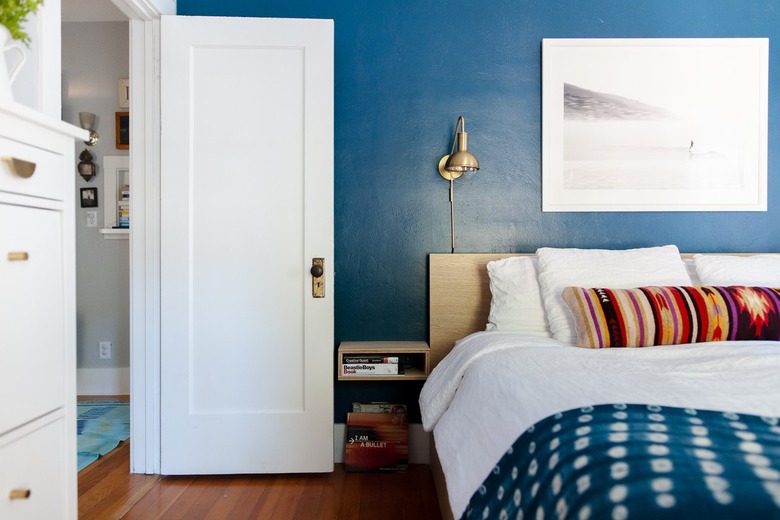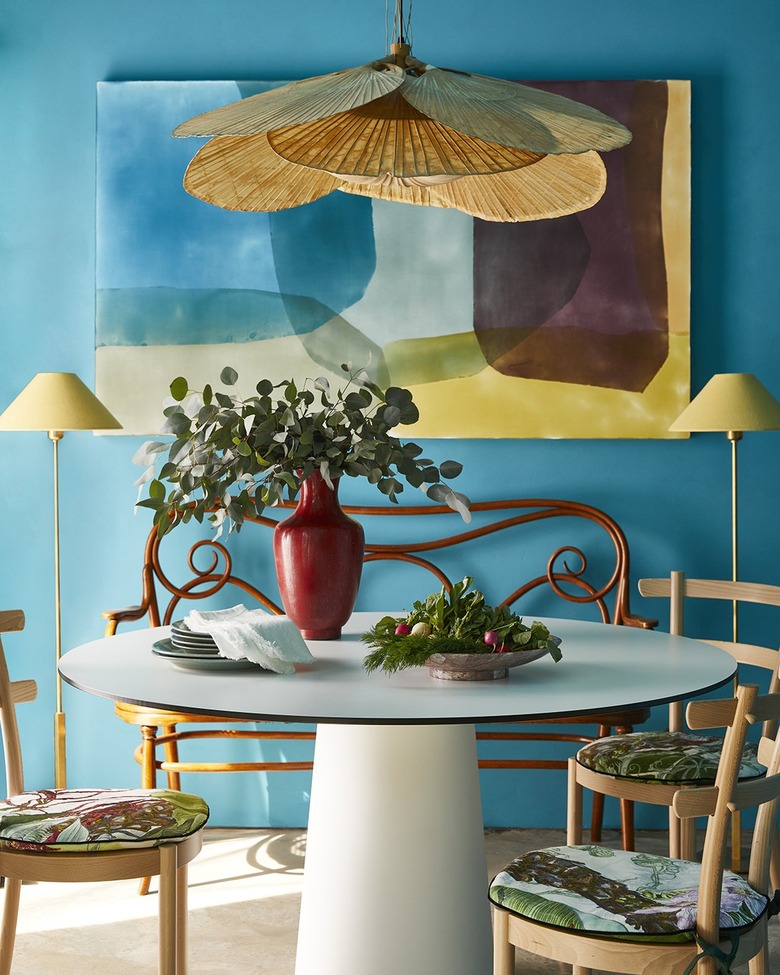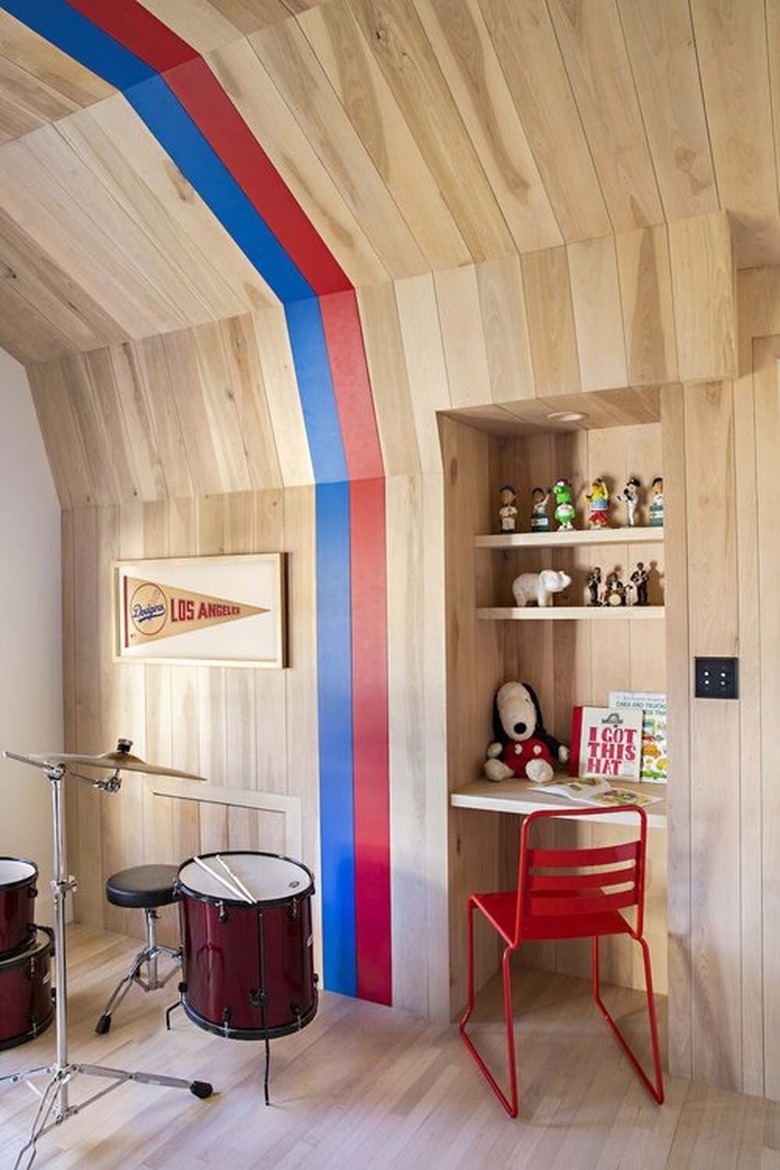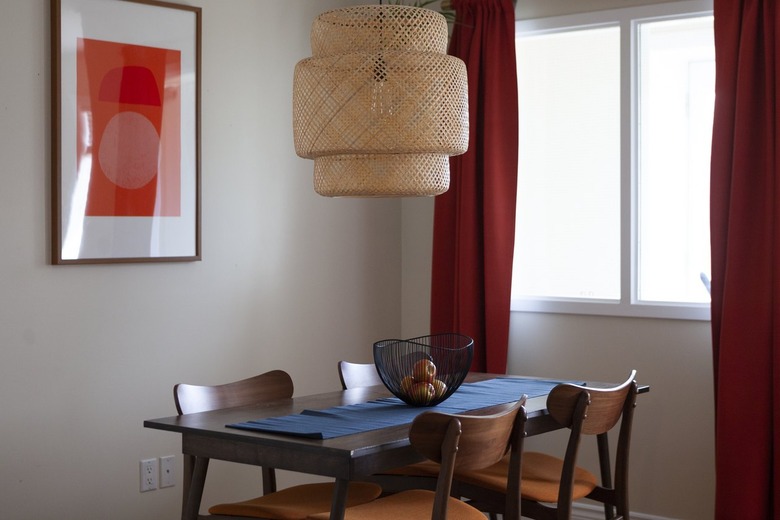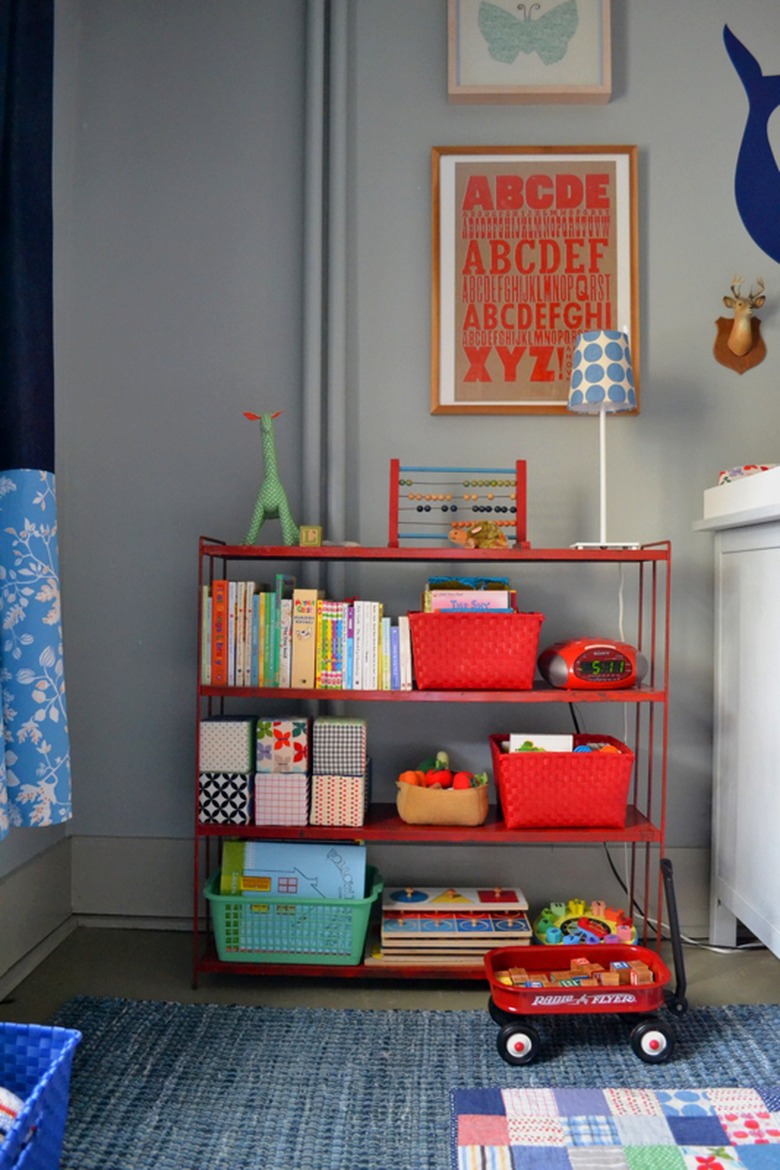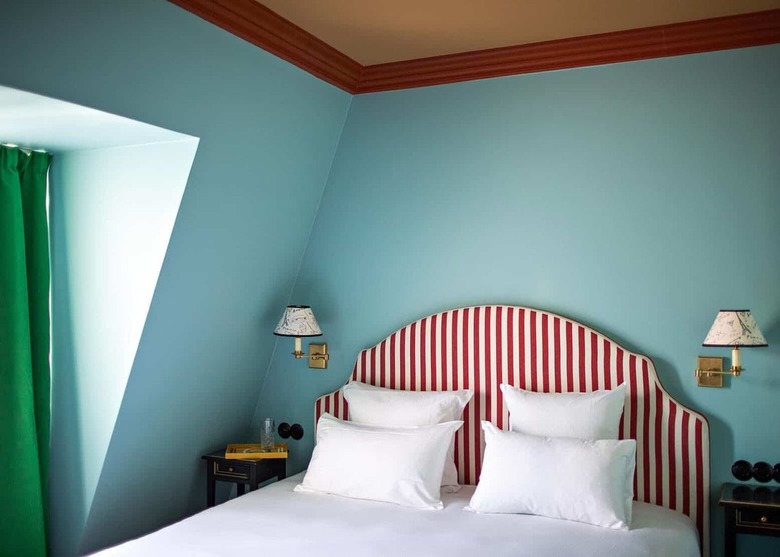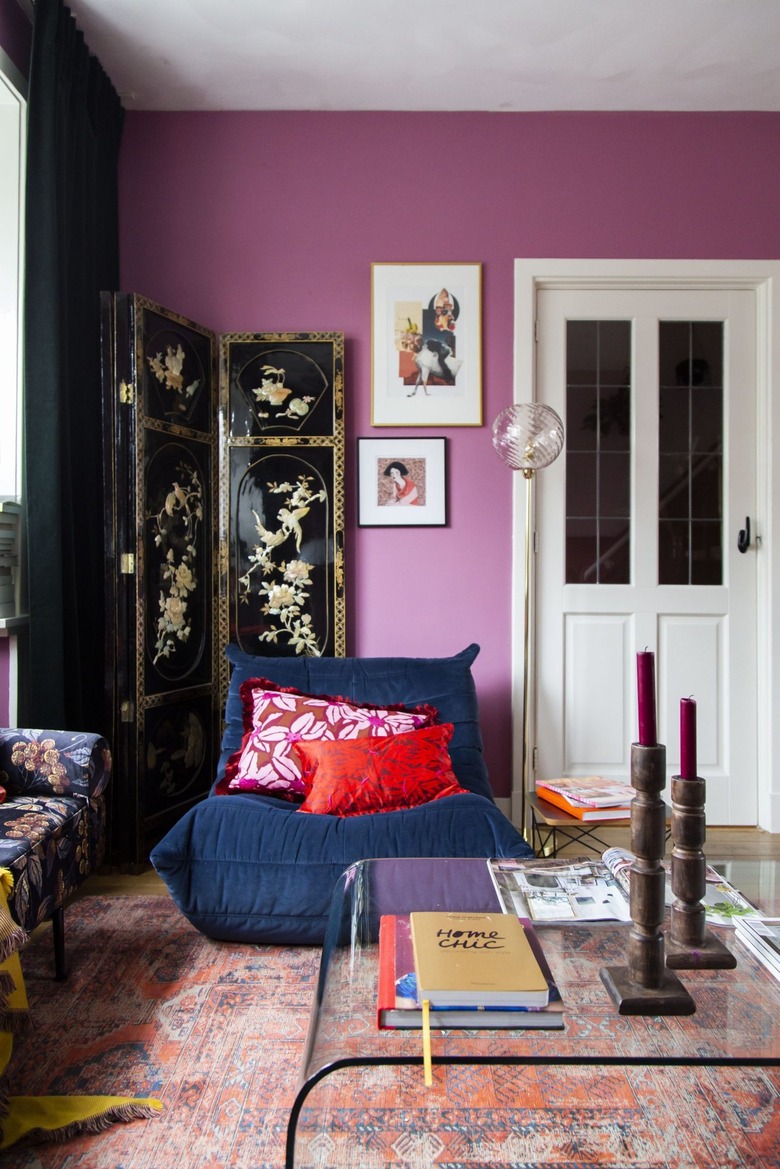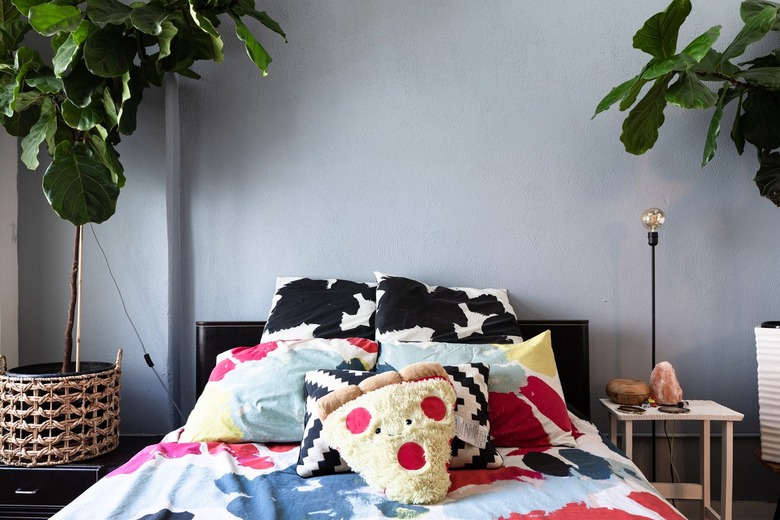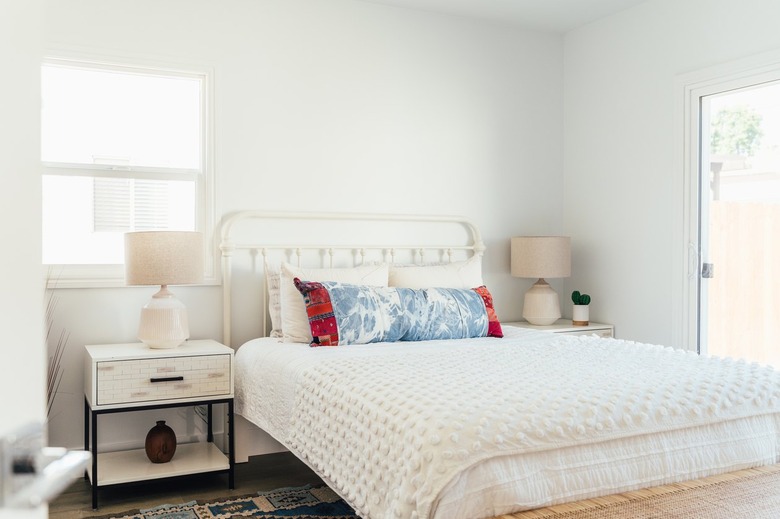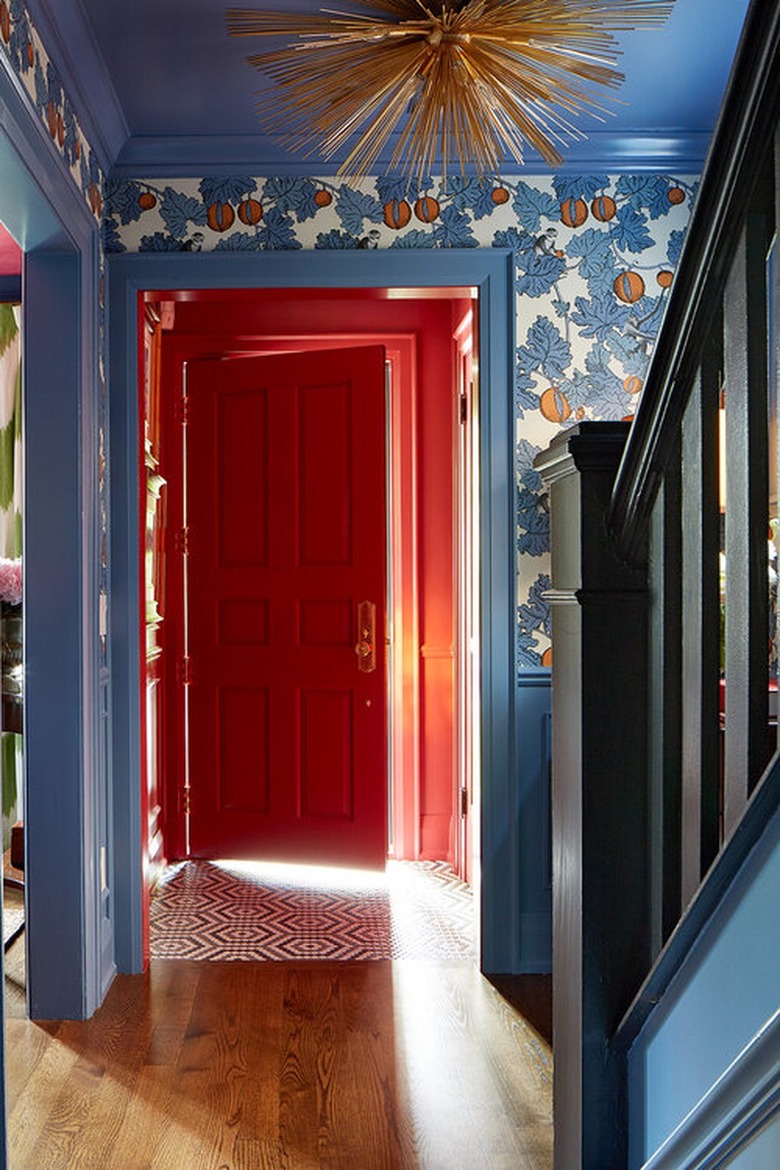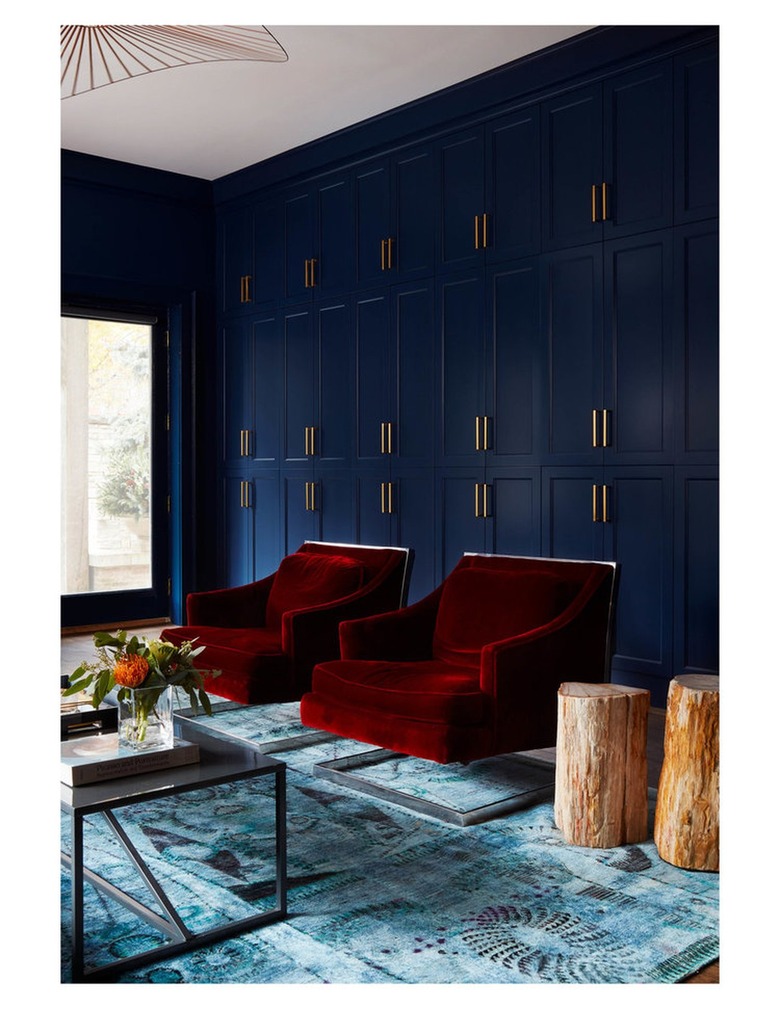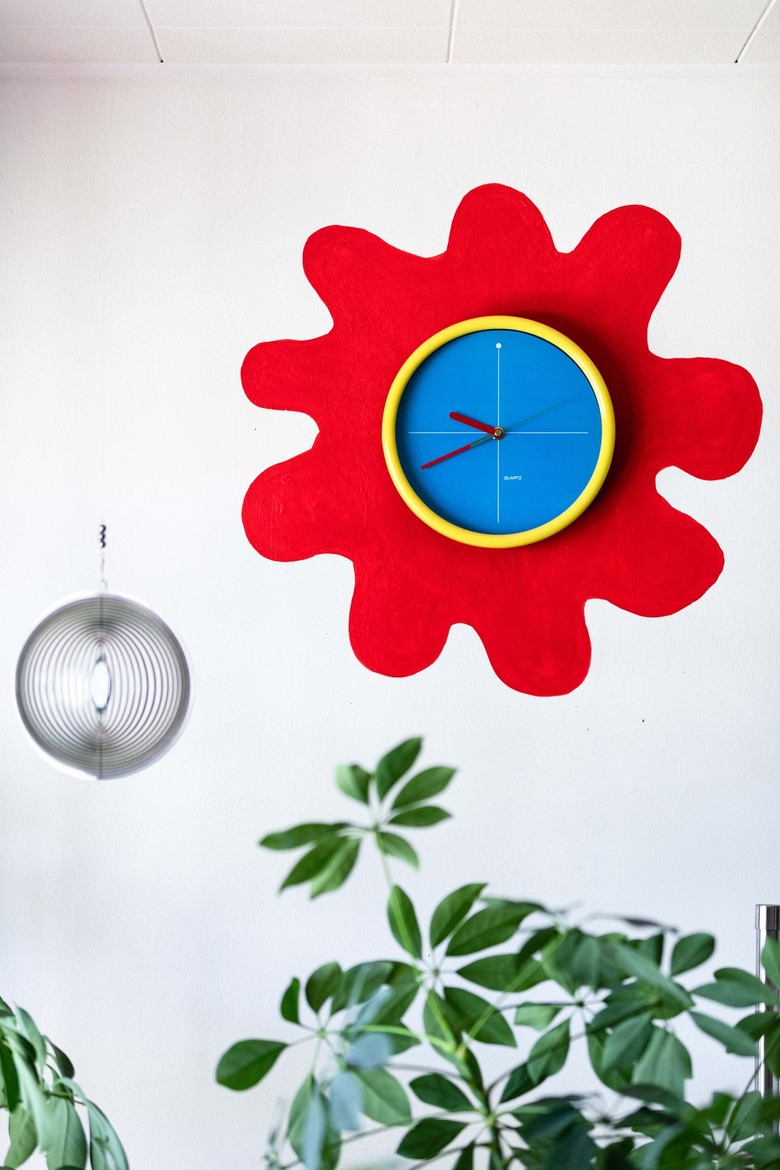12 Colors That Go With Red And Blue
Red, white, and blue may be the colors of the American flag, but that doesn't mean a color combo of red and blue has to feel patriotic. A warm color like red invokes feelings of passion and energy, which is in direct contrast with the refreshing calmness that cool blue tones inspire. Yet together, the two colors work — so long as there's a third shade to balance things out.
Thankfully, blue can be quite complementary and easy to design around, according to Cristina Lehman, founder of C.Lehman Home. "Blue is a very versatile color and can almost be considered neutral depending on how light or dark [it] is," she says. "For a really moody vibe, darker navy blues paired with black make a big statement."
The easiest way to approach the scheme is to start with one color as the base of the room (think: wall paint or a statement couch). Next, weave in a secondary color with the help of home decor like an area rug, artwork, or colorful appliances. And last but not least, balance the two shades with a third hue that ties everything together. Now, if you're thinking that adding another color to an already bold palette is a little daunting, you're not alone. But with a little courage and creativity, you'll be able to pull off the look seamlessly. Ready to get started?
Scroll on for a few color ideas that will undoubtedly inspire a vibrant room makeover.
12 Red and Blue Color Combinations
1. Red, Blue, and Yellow
Combining the three primary colors — red, blue, and yellow — is a classic choice that will provide incredible contrast. However, in order to ensure your space won't look like a kindergarten classroom, follow the lead of Angie Hranowsky and use shades that lean slightly darker or lighter. In this dining room, the designer chose to go with aqua, mustard yellow, and crimson for a grown-up take on the traditional color scheme.
For some, red, white, and blue color palettes might bring to mind the Fourth of July, but that doesn't mean that you can't use the trio during the rest of the year. The secret is all in the shades of red and blue that you choose. In this bedroom, cerulean is favored instead of the more patriotic navy, which gives the trio an entirely different look. The patterned bolster on the bed provides just a hint of red while the crisp white accents anchor the scheme.
Natural wood finishes or rich brown tones tend to complement both blue and red beautifully as demonstrated in this music corner by Raili Clasen. Here, light wood planks go from the floor, up the wall, and curve onto the ceiling offering loads of warmth and a seamless transition. Even the tiny alcove with shelves and a desk is clad in the same paneling. The red and blue stripes and red chair add an artistic and energetic pop of color.
The dark red curtains, navy runner, and wood furniture showcased in this dining room are balanced by the beige walls. The neutral color reads softer and warmer than crisp white but it's still light enough to balance the more saturated tones. A woven bamboo pendant light adds texture and an organic note.
Light gray walls provide the perfect neutral backdrop for kids' rooms that tend to be bursting with vibrant colors. Case in point: This room by WREN Handmade is decked out with an equal share of red and blue thanks to the curtains, rug, shelving, and artwork. An assortment of toys echoes the balanced scheme.
If you're ready to go all in on a red and blue color palette, let this hotel room by designer Luke Edward Hall be your guide. Rather than showcasing decorative accents throughout the room that combine two or more shades, appoint a solid color for a handful of features. In this setup, the green curtains, blue walls, red striped headboard, and red ceiling trim are all bold enough to stand on their own merit, but when grouped together, the impact is even more powerful and requires little else when it comes to decor.
When you mix together blue and red, you get purple, so why not pair it with the contrasting duo? In this living room, blogger Marrit de Lang did just that and painted the walls with a rich shade of lavender. A navy blue bean bag chair and bench amp up the drama while red throw pillows and a terra cotta rug inject a hint of warmth.
Even though leafy green foliage frames a light blue accent wall in this room, the colorful bedding is the star of the show. Flaunting shades of blue, red, yellow, and black, the vibrant comforter and pillows liven up the space. A low-profile black headboard anchors the bed and adds a modern edge.
An all-white bedroom makes for an incredibly serene refuge, and this one is no exception. A single blue and red lumbar pillow adds a pop of color, while the subtle variation between shades of white and cream keeps the light and airy scheme from falling flat.
A quick and easy way to weave an accent color into a blue and red room is with a funky wallpaper pattern. In this high-contrast setup, a navy blue door competes for attention with a cherry red and pink wallpaper. The throw pillows on the bed complete the scene and tie the whole look together.
Go all in on a bold palette like the team over at Cynthia Ferguson Designs and weave in a tertiary color like orange. In the corridor just beyond the foyer, half of the wall is decked out with wallpaper showcasing a blue and orange pattern, while the other half of the wall, ceiling, and trim are all painted in the same shade of cornflower blue. The color red — covering the door, walls, trim — is used to visually separate the entry from the corridor.
In this swanky seating area by Jen Talbot Design, rich saturated colors are the name of the game. A wall of dark blue cabinetry anchors the space while ruby red velvet lounge chairs sit on top of a blue-green area rug. The cool color of the landing pad lightens the moody scheme and injects an unexpected burst of energy.
The Best Colors to Pair With Red and Blue
Contrasting color pairings like red and blue, while fun and playful, can also pose a challenge or two when it comes to designing your space. How do you decide what shades to pair it with? Remember to think about your space: What mood do you want to create? What is the room used for? Does it get a lot of lighting? Answering these questions will help you narrow down your color choices and the level of saturation — vibrant shades might be good for a kid's playroom, while you might prefer something a bit calmer for an adult bedroom.
Next, you'll want to consider your existing pieces of decor. Can you draw inspiration from a sofa or a rug that you already have? If you're starting from scratch you can compare fabric swatches, paint samples, and wood or metal finishes to get a better idea of how everything looks together. Keep in mind that all three colors don't have to be used equally throughout your space, you can use as little or as much as your heart desires. It might be easier to select one as the dominant color and design your space around that, and that's totally fine.
Now that you're equipped with a few helpful tips, it's time to finalize your palette. To recap, here are our favorite colors to pair with red and blue:
- Yellow
- White
- Natural wood
- Gray
- Beige
- Green
- Purple
- Black
- Cream
- Pink
- Orange
- Aqua
